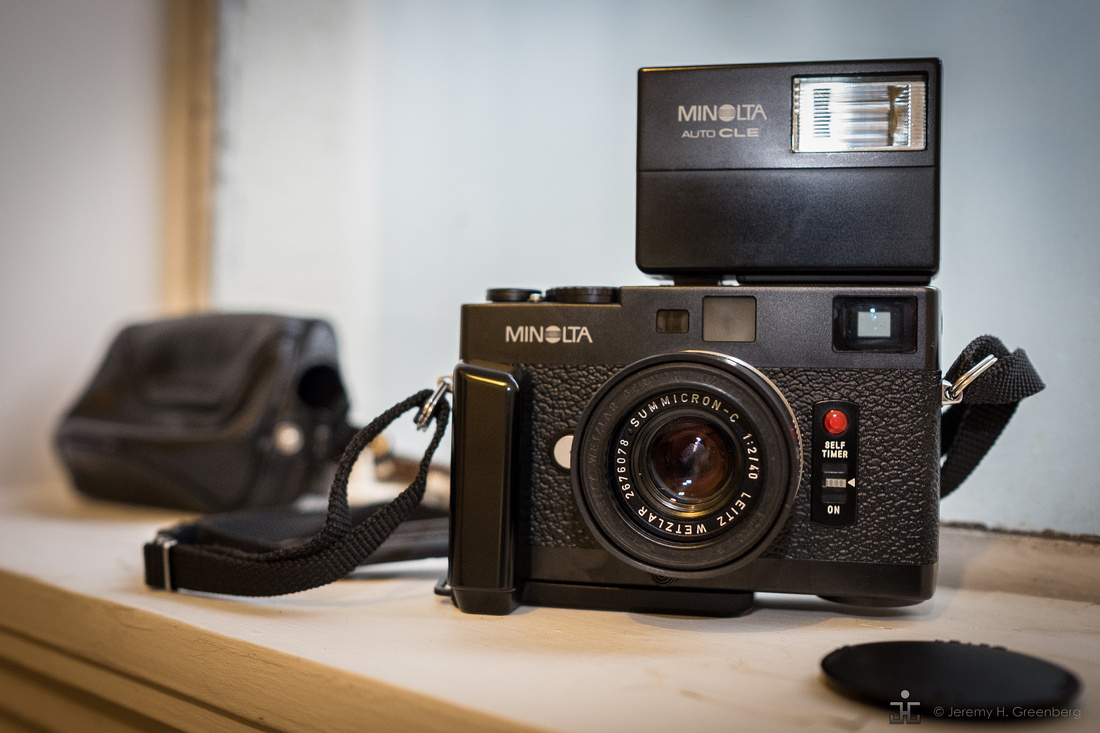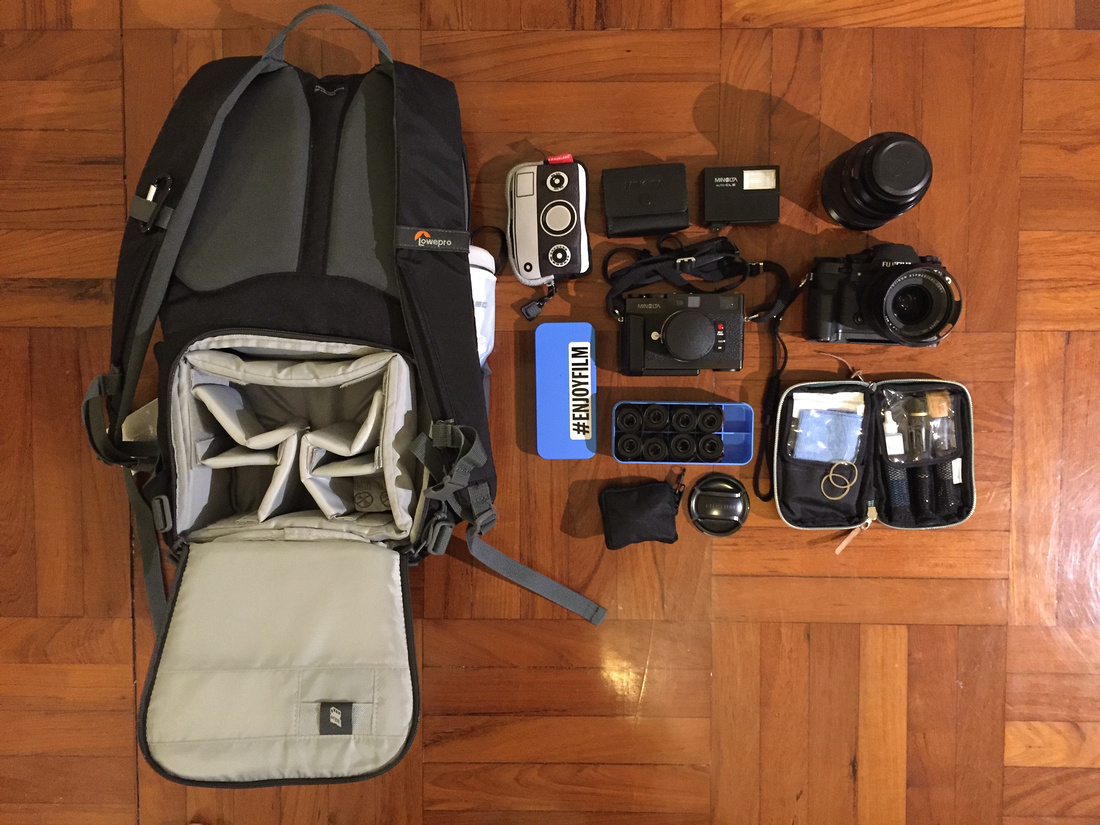Blog #26 Gear for Travelling (light is right)
Blog #26 Gear for Travelling (light is right)
Gone are the days of carefree travelling with massive luggage allowances. These days, the lighter the better and if you are anything like me when it comes to travel, minimalist is the name of the game. I’m not talking about one pair of underwear sort of minimalist but when it comes to gear and camera equipment, light is right. Sure, you could pack your clothing and stuff your smartphone in your front pocket and get out to the wilderness, and yes, you would have a very small and light travel camera. However, smartphones are good enough but not when it rains, and not in low light conditions. I have been caught in both of these scenarios enough times to want more out of my cameras and gear.
After many years of failed attempts to nail that perfect camera and bag combination, and getting it wrong, I think that I have finally found that ultimate travel photography set up. The Japanese have a business practice called Kaizen where they work towards constant improvement. I subscribe to this belief in my professional and person life as well https://en.wikipedia.org/wiki/Kaizen . The purpose of this blog is to share my little discovery in the area of travel photography with you. This blog entry will not discuss the What or When of travel photography (see Blog #24, http://www.zenfolio.com/jeremyhgreenberg/e/pages/blog.aspx#333462549 ) but will rather focus [pun intended] more on the gear.
For me, analog film and digital is a way of life. It’s not an either or thing. I must travel with both. You might want to go with film or digital and that’s fine. Either way, I suggest two camera bodies and a maximum of three to four lenses are essential. Use both or use one as a backup in case one of them fails, more on that later. Let’s start with the bag. You want something fairly small and light that has rain protection. I have a whole closet full of bags and backpacks and my preferred bag is the Lowe Pro Photo Hatchback BP 150 AWII. It’s got the absolutely perfect amount of space that forces you to take only the essentials. Technically, it’s 7.7W x 4.3D x 5.9H in (19.5 x 11 x 15 cm) at 1.8 lbs. or 0.8 kg in weight. It’s a simple bag with large outside padded pocket that can easily fit an iPad Air (although I only travel with my iPhone 6 and extra battery charger). It has a top section for storage of a light jacket, small loose items, and the padded camera area that is accessible only by taking the bag off (see photo below). It is placed low to keep the weight towards the lower back, adding comfort. Side pouches on both sides can fit a small travel tripod (optional but not recommended) while also carrying a water bottle or two (highly recommended) in the opposite side so that the bag remains balanced. The Photo Hatchback also includes a removable waist belt and chest connection so each shoulder strap can be attached to each other preventing the shoulder straps from falling off of your shoulders while hiking, bending down to tie your shoes, or even running. There is a rain cover that discretely stows in the bottom of the bag when the sun is shining. Simple, functional, everything you need, and nothing you don’t.
In terms of my digital camera selection, the mirrorless FujiFilm X-T1 is outstanding. Its APS-C sensor size and weight are such that you forget that it's there white avoiding the feeling of carrying roughly the weight of a three-year-old hanging off of your neck for nine hours straight! Superb colour and image quality at 16MP is more that enough to appreciate images viewed on a 27" monitor or printed A3 size. The X-T1 is weather and temperature resistant with full functionality, video, and acceptable low light, high ISO quality that make this camera my number one choice. In fact, it is my only digital camera that I own. There is a high range of exceptionally good lenses for the X Mount Fujifilm system. Some of the Fujinon lenses water resistant as well. How water resistant? Very. I’ve shot in absolute pouring rain such that the camera was continuously 100% wet and it all just worked. Thank you Fujifilm! I travel with the 16-55mm (24mm-82.5mm full frame equivalent) f/2.8 weather resistant zoom lens and the prime 23mm (35mm full frame equivalent) f/1.4 for low light applications. The zoom might be enough be since it is slightly big and heavy, sometimes I just like my go-to focal length 35mm equivalent and let the good times roll. This covers the effective focal range of 24mm wide to 82.5mm portrait and gives enough reach to get me to the other side of street, so to speak, without crossing the road. Longer range lenses are bigger, heavier, and not optimal for travelling light. Plus, for street, documentary, night, portrait, landscape, or architectural photography (usually the stuff of travel), the bazooka lens is best left at home in its dry cabinet. Long lens are generally for sports or wildlife. If the travel that is planned may include one or both of these situations, of course the big guns must come out for those conditions. I rarely encounter these circumstances while travelling so I find that around 85mm is long enough.
For film, in the early 1980’s there were compact 35mm film camera wars between American, European, and Japanese manufactures and more so across the various Japanese manufactures. Minolta of Japan around 1982 partnered with Leica of Germany and built one of the most incredible, small, light, and capable cameras ever made, the CLE (pictured below). It uses Leica’s M Mount system. The is a superb camera that has a mini sized flash and is so small a light that it really can only be beat by the Rollei 35. Other benefits to this rangefinder body style is that its light meter uses two small SR43 batteries that are inexpensive and readily available in most places plus they last for months or even years. The CLE has an aperture priority mode so that the only controls are aperture and focus, the camera does the rest. The CLE was designed to use the perfectly normal framed Leica Sumicron -C 40mm f/2. I would add the Leica 28mm f/2.8 Aspherical lens (German Edition) as a wide angle compliment. Both lens are tiny and quite possibly the best in their class in terms of image quality, size, and weight. Other than their bloody expensive price, these are heirloom quality lenses that most photographers would agree represent quite possibly the best optics available to the consumer or professional.
The flash that comes with the Fujifilm X-T1 is tiny and powered by the camera itself. The Minolta CLE rangefinder (pictured below) has a tiny but effective (up to about 15 feet or 5 meters) flash that takes two AAA 1.5V batteries. Extra batteries (and charger for the X-T1) are essentials with adapters for the given country or regions that I will be visiting. The blue box holds 10, 35mm cassettes (rolls) of film usually ample for one to two weeks of travelling. I usually bring about half and half colour and black and white. Black and white I can develop myself while the colour I will bring to the shop for processing when I return home. An x-ray proof film bag (not shown) is also used to protect the film from airport scanners http://www.bhphotovideo.com/c/product/185375-REG/Domke_711_15B_Film_Guard_Bag_Large.html. A small holder for extra SD cards is essential as well (not shown) for the X-T1. Pelican Cases makes a brilliant dust and moisture proof container for SD cards that I use http://www.pelican.com/us/en/product/watertight-protector-hard-cases/micro-case-series/memory-card-case/0915/. The only other gear related item is the lens cleaning kit (green) from Cura Japan. This contains a small high quality brush, lint free cleaning cloths and special alcohol-free liquid cleaner made for cameras and lenses. That's about it folks, two bodies, two lenses each. The whole kit fits inside this small sized bag and should not draw the type of attention that would entice even the most novice of would-be-thieves. Sans tripod sticking out of the bag like a COME STEAL ME neon sign, I should stay relatively safe. I also use a small combo lock on the outside zipper to avoid getting nicked while waiting in lines (I'm from New York, you can never be to careful). I also avoid camera straps with large colourful writing on them (Nikon, are you reading this?) for the same purpose of trying to keep on the DL (that's Down Low for you Millennials).
There should even be enough room for small compact umbrella (in the side much in lieu of tripod) and a light jacket or hat for cooler, rainy, or sunny weather. With one of the camera out and worn, the bag gets even lighter and can be used to store that bottle that I’m saving for after dinner…oh… I mean souvenirs.
Of course, the stuff that I listed is for recreational holidays and not necessary suitable for location based portraits or large scale commercial work. A tripod would be a must for such conditions. I plan to visit the south of France in the coming weeks and plan to bring exactly the aforementioned gear. Check here next month for a report on the optimal gear set-up for travel and some images from this experience.
May the light be with you, always.
jhg



